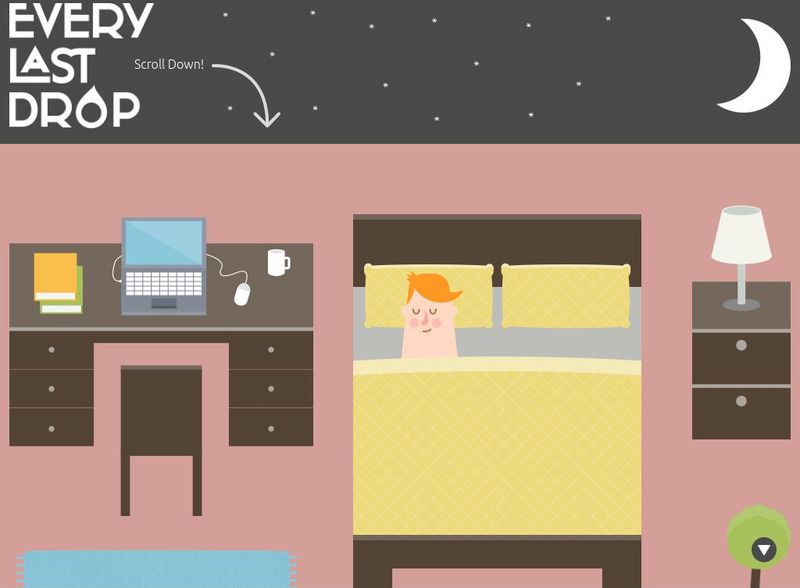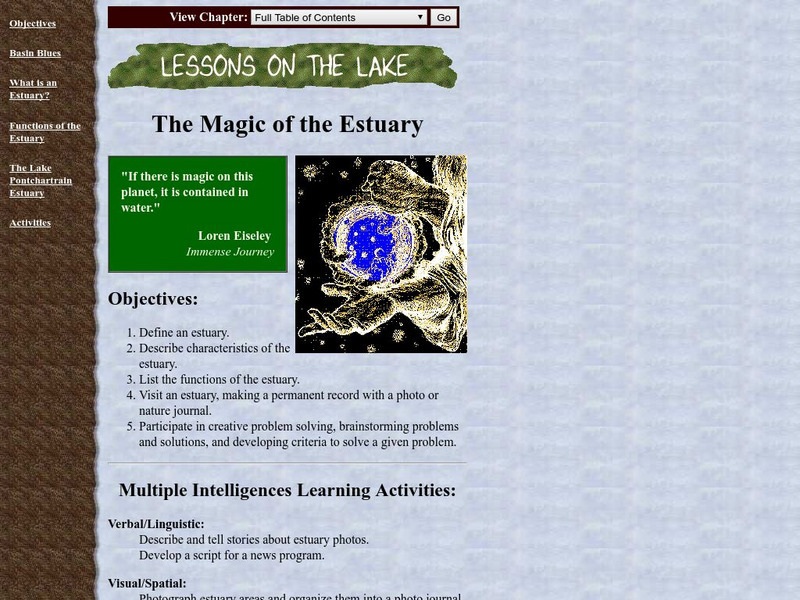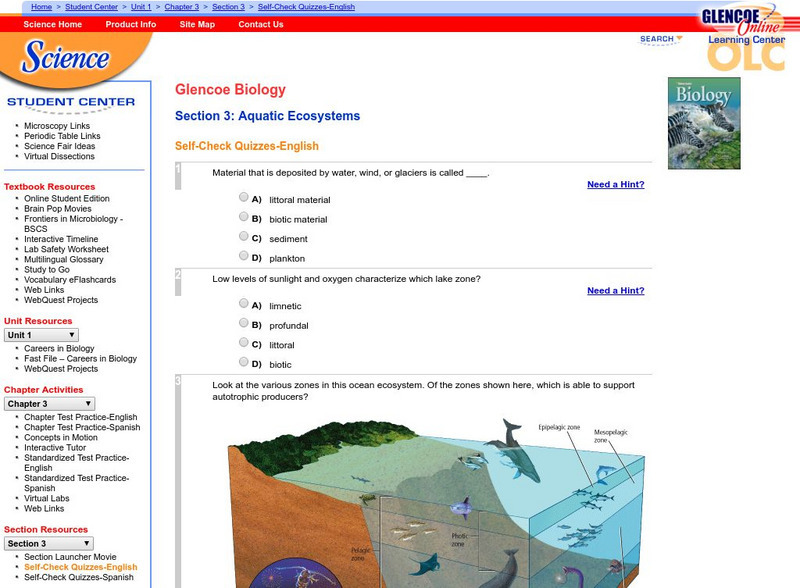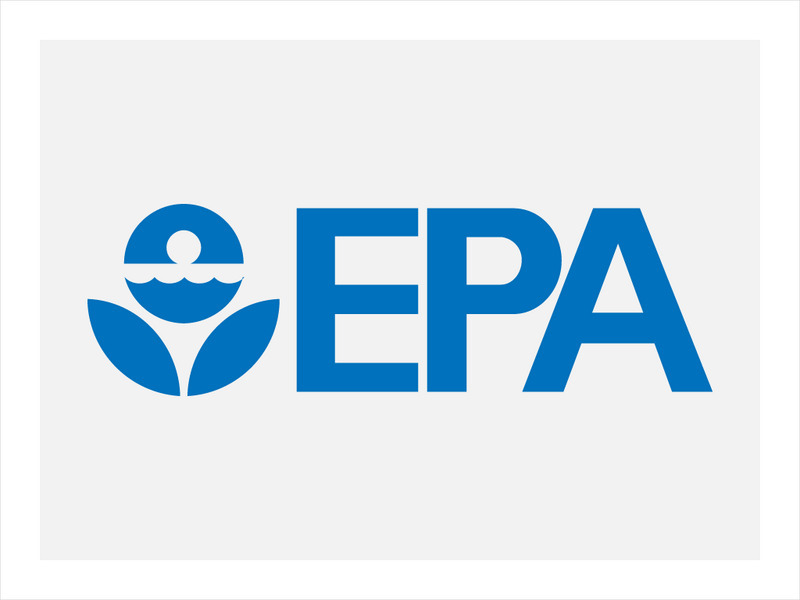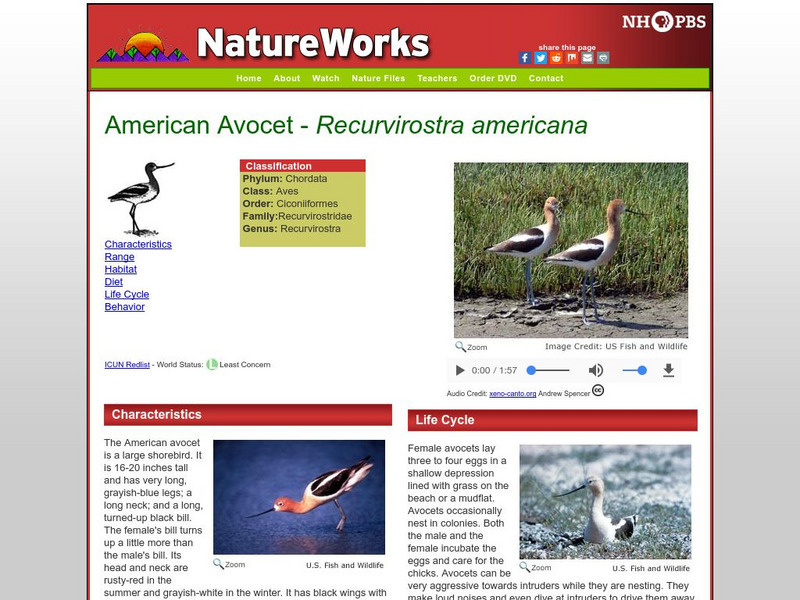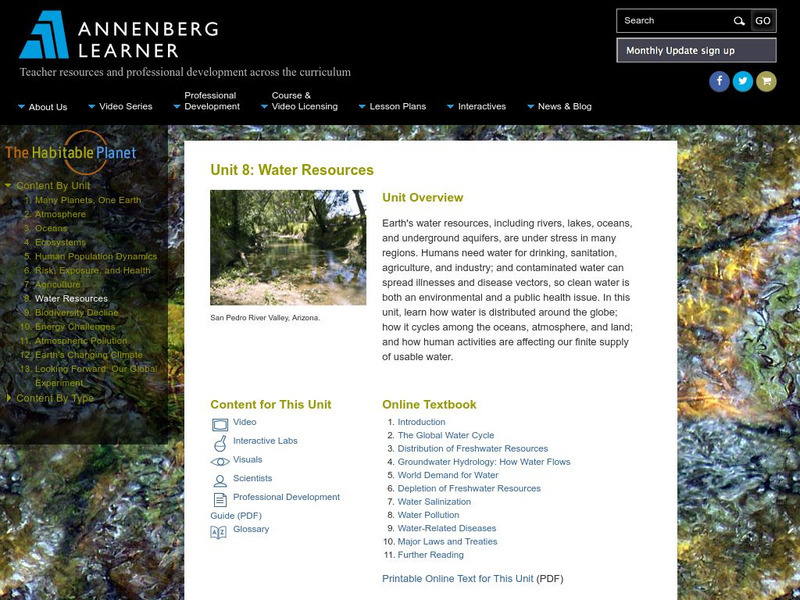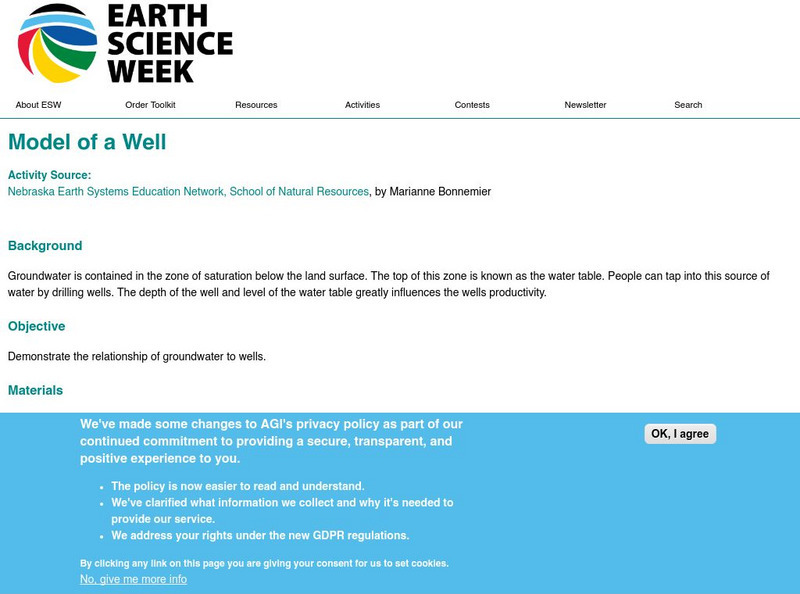American Institute of Biological Sciences
Action Bioscience: International Water Facility
Find out what can be done to clean up the world's water sources to provide safe drinking water because at least 35% of the world does not have it available to them and only 3% of the world's water is fresh.
TED Talks
Ted: Ted Ed: What's So Great About the Great Lakes?
The North American Great Lakes- Huron, Ontario, Michigan, Erie, and Superior- are so big that they border 8 states and contain 23 quadrillion liters of water. They span forest, grassland, and wetland habitats, supporting a region that's...
TED Talks
Ted: Ted Ed: Eli the Eel: A Mysterious Migration
James Prosek tracks the life journey of Eli the Anguilla eel as she travels her mysterious "backward" migration from the sea to fresh water and back again. [4:39]
TED Talks
Ted: Ted Ed: Where We Get Our Fresh Water
In the first of a two part series on fresh water, Christiana Z. Peppard breaks the numbers down and discusses who is using it and to what ends. [3:47]
Climate Literacy
Clean: Colorado River Supply
Students examine available data of water in the Colorado River Basin, study the possible consequences of changes to various user groups, and suggest solutions to adapt to these changes.
PBS
Pbs: What's Killing the Oysters?
A special report provided for by PBS on what's killing the oysters of Ago Bay in Japan.
Other
Alberta Riparian Habitat Management: Protecting Shorelines & Streambanks [Pdf]
Protecting Shorelines & Streambanks - Naturally explains the critical importance of healthy shorelines for preventing soil erosion and filtering out pollutants. It looks specifically at riparian areas, such as those in Alberta, which...
Other
Alberta Riparian Habitat Mgt Society: Biodiversity and Riparian Areas [Pdf]
Healthy riparian areas have much higher levels of biodiversity than other types of ecosystems, as explained in this fact sheet. Unfortunately, this also attracts more people, which can contribute to degradation of the ecosystem if the...
Other
Cwec: Down the Hill . . . Your Watershed (Mini Unit) [Pdf]
Everyone is part of a local watershed and their actions affect the water resources in their watershed. In this mini-unit, students learn about watersheds, why they are important, dangers they face and how watersheds can be protected.
Other
Cwec: Water in the News (Lesson) [Pdf]
Water issues frequently appear in local newspapers and this instructional activity explains ways this resource can be used in the classroom.
Other
Cwec: It's a Small World (Mini Unit) [Pdf]
Water resources around the world are finite and must be protected. This mini-unit is designed to teach students to appreciate this.
Other
Waterwise: Every Last Drop
Every Last Drop is an interactive website which takes a detailed look at how much water we waste on a daily basis and how small changes can make a big difference.
US Geological Survey
Lake Pontchartrain Basin Foundation: The Magic of the Estuary
A collection of multiple intelligences learning activities about the characteristics and functions of an estuary. The site also includes basic information about an estuary along with facts about the Lake Pontchartrain estuary.
McGraw Hill
Glencoe Biology: Aquatic Ecosystems: Self Check Quiz
Try these five multiple-choice questions about aquatic ecosystems. After answers are submitted, students can review their mistakes.
US Environmental Protection Agency
Epa: 25 Years of the Safe Drinking Water Act: History and Trends
A resource from the Environmental Protection Agency that discusses the 25 years of progress, how the Safe Drinking Water Act has protected our health, standards for tap water, and the public's right to know.
PBS
Nh Pbs: Nature Works: American Avocet
Learn more about the American Avocet through this informative site. This resource features characteristics, reproduction, range, food, and behavior of this fascinating bird, as well as an audio clip of the bird's song.
DOGO Media
Dogo News: Week of 3 10 14: Freshwater Crisis
Article reports on ways in which climate change is affecting freshwater.
Annenberg Foundation
Annenberg Learner: Water Resources
Freshwater accounts for only some 6 percent of the world's water supply, but is essential for human uses such as drinking, agriculture, manufacturing, and sanitation. As discussed above, two-thirds of global freshwater is found underground.
A-Z Animals
A Z Animals: Reference: Habitats: Swamps and Wetlands
Learn about the plants, animals, and other characteristics of some wetland ecosystems.
American Geosciences Institute
American Geosciences Institute: Earth Science Week: Model of a Well
Learners demonstrate the relationship of groundwater to wells.
CK-12 Foundation
Ck 12: Biology: Freshwater and Wetlands Biomes
[Free Registration/Login may be required to access all resource tools.] Covers freshwater biomes and wetlands.
Sophia Learning
Sophia: Water Resources in the World
Brief video lecture discusses the importance of water as a critical life resource. [2:53] Additional video explores the human side of the story with the resulting global implications. [2:44]
US Geological Survey
Usgs: Earth's Water Surface Water
This site has everything you might want to know about surface water and things you probably didn't even imagine! Click Home to access the site in Spanish.
Other
University of Texas at Dallas: Why Is the Sea Salty?
A clear and concise explanation of why some of the earth's waters are salty and others are not.








![Alberta Riparian Habitat Management: Protecting Shorelines & Streambanks [Pdf] Handout Alberta Riparian Habitat Management: Protecting Shorelines & Streambanks [Pdf] Handout](https://d15y2dacu3jp90.cloudfront.net/images/attachment_defaults/resource/large/FPO-knovation.png)
